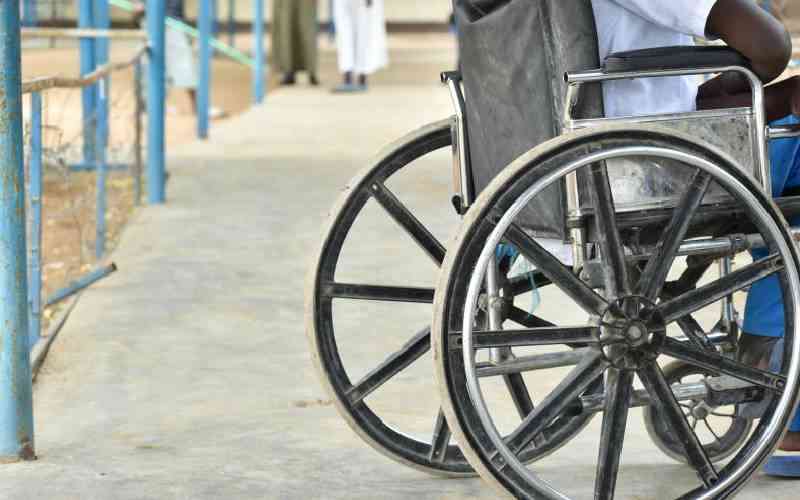This is because smallholder farmers have limited financial resources to buy fertiliser.
Nitrogen is one of the most essential nutrients needed by plants for their growth, development and reproduction, yet it is depleted in most African soils.
Soil depletion over the years has led farmers to open new land to maintain production. This has often led to increased deforestation and encroachment on marginal areas. The result over time has been declining farm production and family incomes, as well as poor nutrition.
Empowering farmers to increase legume production can turn the tide for African farmers.
Grain legumes are rich in carbohydrates, minerals and are a cheap source of protein. They improve soil fertility by capturing nitrogen gas in the air and bringing it into the soil. The amount of atmospheric nitrogen fixed by legumes into usable nitrogen can be substantial.
High-quality feed
Any portion of a legume crop that is left after harvest, including roots and nodules, can supply nitrogen to the soil system when the plant material is decomposed.
In addition, the harvest residue provides high-quality feed for livestock. This is because it is rich in protein.
Smallholder farmers in Africa who grow legumes such as soybean, beans, groundnut and chickpeas experience three immediate benefits: improved health and nutrition of families and their livestock; enhanced soil fertility; and, increased incomes, contributing to reducing rural poverty.
These reasons lie behind the major science-based farmer support project N2Africa, launched in 2009. Its objective is to boost legume production in sub-Saharan Africa to address food and nutrition insecurity and to increase rural communities’ incomes.
The large-scale, research-based project is focused on delivery and dissemination of the best available legume technologies. Building sustainable, long-term partnerships with smallholder farmers is central to the plan.
The work is being carried out in 11 African countries: Kenya, Democratic Republic of Congo, Ethiopia, Ghana, Malawi, Mozambique, Nigeria, Rwanda, Tanzania, Uganda and Zimbabwe.
In the short term, the project seeks to demonstrate the benefits of legume production.
In the long term, the aim is to develop sustainable systems for supply of inputs like fertilisers and seeds, strengthening the ability of farmers to market and tackling constraints of legume productivity along the value chain.
In its first phase, the project reached more than 230,000 farmers who evaluated and tried out the technologies being promoted, such as improved grain legume varieties, phosphate-based fertilisers and rhizobia inoculants – which are root-nodule bacteria that support legumes to fix nitrogen.
Stay informed. Subscribe to our newsletter
A majority of smallholder farmers grow their legumes without fertilisers, which are expensive and are also not blended, meaning they do not have the correct composition of minerals required by legumes.
The ongoing initiative is promoting the use of fertilisers, especially blended for legumes and biofertilisers. While biofertilisers are more affordable than mineral fertilisers and have great potential to increase yield, they are not widely used in sub-Saharan Africa.
This is due to low levels of awareness and a lack of favourable environmental policies. There are also no proper public-private partnerships to commercialise the technology.
The introduction of several commercial rhizobia inoculant products is underway. To achieve this, N2Africa is building researchers’ capacity to isolate African rhizobia and identify effective strains for formulation of legume inoculants. It is also important that the capacity of regulatory authorities to test products for quality and to formulate standards is enhanced.
The circumstances differ widely between countries or regions and for each crop. The current work involves engaging with suppliers to ensure a sustainable supply of inputs. This includes seeds, high-quality inoculants and legume-specific fertilisers. A lot of effort has gone into strengthening the ability of farmer organisations to aggregate their grain for joint marketing.
Thanks to this initiative, farmers are using improved seeds, fertilisers and inoculants to increase legume productivity. They are also better organised and selling their produce at competitive prices. On the other hand, seed companies and agro-dealers are strengthening input supplies systems.
The project’s goal is to reach 780,000 beneficiaries by 2018 across the 11 countries.
By Frederick Baijukya, Researcher and Country Co-ordinator N2Africa, International Institute of Tropical Agriculture (IITA); and Fred Kanampiu, Researcher and Project Co-ordinator N2Africa, International Institute of Tropical Agriculture (IITA)
 The Standard Group Plc is a
multi-media organization with investments in media platforms spanning newspaper
print operations, television, radio broadcasting, digital and online services. The
Standard Group is recognized as a leading multi-media house in Kenya with a key
influence in matters of national and international interest.
The Standard Group Plc is a
multi-media organization with investments in media platforms spanning newspaper
print operations, television, radio broadcasting, digital and online services. The
Standard Group is recognized as a leading multi-media house in Kenya with a key
influence in matters of national and international interest.
 The Standard Group Plc is a
multi-media organization with investments in media platforms spanning newspaper
print operations, television, radio broadcasting, digital and online services. The
Standard Group is recognized as a leading multi-media house in Kenya with a key
influence in matters of national and international interest.
The Standard Group Plc is a
multi-media organization with investments in media platforms spanning newspaper
print operations, television, radio broadcasting, digital and online services. The
Standard Group is recognized as a leading multi-media house in Kenya with a key
influence in matters of national and international interest.








